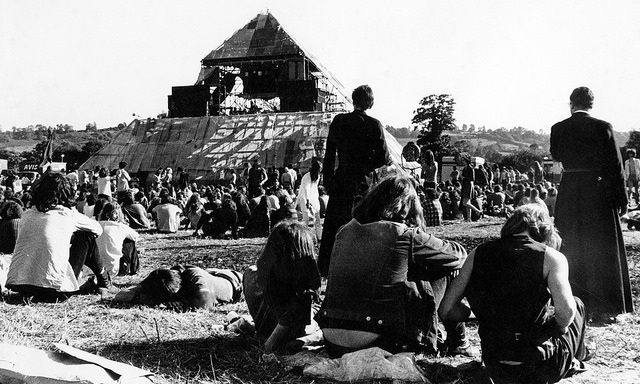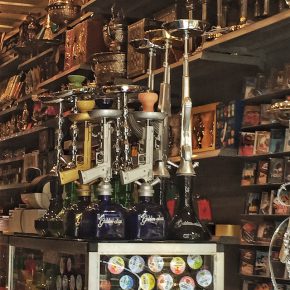The further we get into the millennium the more I suspect we’ll soon be looking back on the 1990s with more nostalgia, but to do so would be in bad faith. You might only do so if you think that history and politics ended at some point in the early 90s. The ethos of that decade can be summed up in one phrase: it’s all been done.
After all, the 90s were the years when you could fall back on certain assumptions. It was a world where Fukuyama could be taken seriously. We were all meant to believe that the ‘end of history’ had finally come, humanity had reached its zenith with liberal democracy. The Soviet Union was gone by 1991, and fascism was no longer a plausible threat. Capitalism was triumphant worldwide. Yet the upheavals since the turn of the century show up the absurdity of Fukuyama’s words.
Everything since 2001 refuges the ‘end of history’ thesis: 9/11 and the ‘war on terror’, the 2008 financial crisis, Brexit and the victory of Donald Trump. The signs of all this were already with us in the 90s, from the Persian Gulf War in 1991 and the rise of militant Islamism to the infighting over Europe in the Conservative Party. These were not the signs of a peaceful new world order.
Even the cultural phenomena of the day suggested there was plenty more action to come. Grunge burst onto the scene in the early 90s with a subversive promise to tear down the rock industry. The days of the studio system, big hair and pyrotechnics were over. Bands like Pearl Jam and Nirvana wanted to return to a more authentic genre. The tone was downbeat, angsty and nihilistic.
Irony and sarcasm were deployed as the West coast scene was absorbed by the very industry it despised. ‘Smells Like Teen Spirit’ is as much a homage to teenage angst as it is regret at the band’s mainstream acceptability. ‘In Bloom’ mocks the fans who are just following the crowd and don’t even understand Nirvana’s message. Conformity and glamour are the primary vices here.
Kurt Cobain later claimed Teen Spirit was a mockery of the thought of ‘having a revolution’ (note not ‘starting’ a revolution) though it is a ‘nice thought’ the song remains sarcastic. The song itself consists of contradictory sentiments which range from the restless calls ‘Hello, Hello, Hello…’ to the passive demands for entertainment.
We might view the song as lacking a clear direction, but then we will have missed the point. Cobain describes the song as “posing as the enemy to infiltrate the mechanics of the system, to slowly start its rot from the inside. It’s an inside job, it starts with the custodians and the cheerleaders.”
Another great example is the music video for ‘In Bloom’, where the band are introduced on the Ed Sullivan show as “three fine young men from Seattle”. The look is complete with combed hair and matching sports coats. The video is shot in grainy black-and-white to give it the feel of the early 60s, the days before there was such a thing as MTV, let alone heavy metal or punk rock.
The aim here is to put the audience at a Brechtian distance, the point of which was to encourage the audience to take a critical view of the events on the screen. With the opening line ‘Sell kids for food, weather changes moods’ and the audience in the video – a crowd of pubescent girls – goes crazy. The main subject of the band’s mockery is the ‘one’ who ‘likes to sing along’, but ‘don’t know what it means’.
This is just one side of the 1990s. The other side was defined not by subversion, but by surrender to the status quo on all fronts. Even the Grunge bands were rapidly assimilated, and the musicians understood what was happening. It is no coincidence that Cobain’s suicide note read: “It’s better to burn out than fade away.” Meanwhile in the UK, the music scene was taking a very different direction.
Almost in direct succession to the West coast alternative rock scene, Brit Pop would emerge from 1992 onwards with bands like Blur and Oasis. This is no coincidence as the bands were partly responding to Grunge, as well as the 1980s rave scene. The techno and dance scene emerged at the end of the 1980s at least partly as an escape from the relentless individualism of the era. It offered people the chance to have a good time by disappearing into a mass of writhing bodies.
Of course, this is true of all music to some extent. The difference being rave is primarily a dance scene and not the kind of music one would listen to sitting down. Though there was never a real conflict between the atomised individualism of the Thatcher era and the pseudo-collectivism of acid house. Likewise, Grunge was readily absorbed by the system.
In contrast, bands like Oasis posed a return to individuality with lyrics like ‘I’m free to do whatever I wanna do’ and ‘I need to be myself, I copy no one else’. Brit Pop as a soft rock, sentimental and nostalgic response to Grunge. It was upbeat, comic and sentimental, concerned with topics like love affairs. Its spirit was embodied by the swaggering laddishness of the Gallagher brothers.
Oasis harked back to the Beatles and 60s counterculture. Except now the counterculture has become a part of the mainstream. It was just another set of pre-packaged lifestyle options for Generation X, the sons and daughters of Baby Boomers, for whom the 1960s has been relegated to grainy montages of civil rights marches on the one hand and wild concerts on the other.
It is no accident that the New Labour project, Brit Pop and the ‘end of history’ all coincide in the same decade. The fundamental premise of each remains the same: we have seen it all now and we can only look back. This is the source of the nostalgia and sentimentality which eventually subsumed Oasis. The same logic lies behind the Third Way and its reduction of politics to managerial process. In other words, the collapse of the centre ground throws into question popular culture as much as it does politics.
Photograph courtesy of Paul Townsend. Published under a Creative Commons license.


